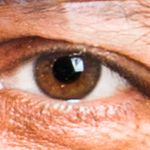- Home
- Stock
- Discussions
- Re: Adobe Stock Images that are AI vs. generative ...
- Re: Adobe Stock Images that are AI vs. generative ...
Copy link to clipboard
Copied
I'm almost positive this is a silly question, but my company has strict AI limitations. I recently created a brochure that contains images that probably had some AI filter applied to them but they are not the generative AI which would draw from the separate 1500 credits. Dont know why this is even a question because all the designers here are blocked from using the generative AI.
But, I received a note saying we cant use ANY AI, even the AI that comes from a traditional AdobeStock download. I would imagine this would get very difficult, or even impossible, to determine. For instance, some art has obvious filters applied to them, but may not be technically true "AI."
So, my question is quite simply, if an image is downloaded in the traditional sense, are there still special restrictions to them? No, right? I've just been going about my daily routine downloading images as I usually do. So, that limitation is just coming from someone who may not be entirely aware of the different AI on AdobeStock, correct? No special AI generating on my part, no special use of credits. Sorry for the silly question... I'm almost certain we can use AdobeStock images that may or may not have used some AI of them, just not the "generative" AI that requires special credits. But, its sounding like I need proof of this. Any info would be GREATLY appreciated.
 3 Correct answers
3 Correct answers
Images generated from AI from scratch by way of AI text-to-images software must clearly be noted as such when a contributor submits a file. (Note that they don't always do so, but close inspection of most such images will clearly indicate they were created with AI). Not so when generative fill or generative AI expand is used, unless generative fill is used to create a new unique object within the image (which may be a photograph or a previously generated AI image). Generative fill is more common
...I agree with @daniellei4510 's advice about re-evaluating your stance regarding use of images that have been altered using an AI tool. While images wholly created with a text-to-image tool such as Midjourney or Adobe Firefly MUST be flagged as Gen AI when submitted to Adobe Stock, images in which the Photoshop Generative AI tool were used on a photograph to extend a background or clean up a messy area or remove a person do not have to be declared as AI. I submitted an image recently of the Atlan
...But, I received a note saying we cant use ANY AI, even the AI that comes from a traditional AdobeStock download. I would imagine this would get very difficult, or even impossible, to determine. For instance, some art has obvious filters applied to them, but may not be technically true "AI."
By @default16j6ltbe7i1s
Sometimes rules are written by people who have no understanding of the technology. Generative AI creates something new. Other tools, like sharpening tools, upsizing tools etc clai
...Copy link to clipboard
Copied
in the future, to find the best place to post your message, use the list here, https://community.adobe.com/
p.s. i don't think the adobe website, and forums in particular, are easy to navigate, so don't spend a lot of time searching that forum list. do your best and we'll move the post (like this one has already been moved) if it helps you get responses.
<"moved from cx desktop">
Copy link to clipboard
Copied
Images generated from AI from scratch by way of AI text-to-images software must clearly be noted as such when a contributor submits a file. (Note that they don't always do so, but close inspection of most such images will clearly indicate they were created with AI). Not so when generative fill or generative AI expand is used, unless generative fill is used to create a new unique object within the image (which may be a photograph or a previously generated AI image). Generative fill is more commonly used to edit errors in photos and AI, in my opinion.)
Ordinarlily, generative expand works very similar to Content Aware Fill (which does not use AI to expand the image but uses the original content of the image to fill in areas around the image or photograph). Such usage does not require the contributor to declare the expansion was created with AI. In any case, generative expand appears to rely first and foremost on the original content of the photo, much like Content Aware Fill.
It's getting complicated, isn't it? 🙂
I think your company needs to re-evaluate and clarify its stance on the use of AI to at least allow for expansion (which, unless such information is contained in the EXIF data, would be next to impossible to discern). As such, there is really no simple way to tell when generative expand is used in an actual photograph.
Community Volunteer | I don't make the rules; I just try to explain them.
--------------------------------
Why did Little Miss Muffet step on the spider? Because it got in her whey.
Copy link to clipboard
Copied
I agree with @daniellei4510 's advice about re-evaluating your stance regarding use of images that have been altered using an AI tool. While images wholly created with a text-to-image tool such as Midjourney or Adobe Firefly MUST be flagged as Gen AI when submitted to Adobe Stock, images in which the Photoshop Generative AI tool were used on a photograph to extend a background or clean up a messy area or remove a person do not have to be declared as AI. I submitted an image recently of the Atlanta, Georgia State Capitol building. I used Photoshop Gen AI to remove power lines and street signs to clean up the image. I did not add anything to the image. I did not declare it as AI.
Copy link to clipboard
Copied
But, I received a note saying we cant use ANY AI, even the AI that comes from a traditional AdobeStock download. I would imagine this would get very difficult, or even impossible, to determine. For instance, some art has obvious filters applied to them, but may not be technically true "AI."
By @default16j6ltbe7i1s
Sometimes rules are written by people who have no understanding of the technology. Generative AI creates something new. Other tools, like sharpening tools, upsizing tools etc claim using artifical intelligence to improve the final result. They are not creating something new. Their concepts may be leaned upon AI, but alone the fact that they run fast on your local computer should be an indication that they are using very little AI to do their work. I'm pretty sure, however, that the algorithms have been created with the support of some AI.
AI is currently a buzz word, a few years prior they talked about fuzzy logic, which is basically the same.
It is not possible to you to determine if an asset has been created with some help of some obscure AI technology, so, except if your company provides you with an AI scanner, deciding on which asset is OK and which asset is not, your only decision making tool at your disposal is the flagging of generative AI assets by Adobe stock. You can, however, visually inspect your assets, to see if the picture licensed did not slip through quality control. But that's all.
It's up to you to check if and how you can be in line with your company guidance. If in doubt, consider asking the author of the rules, how they intend to support you in checking the assets for conformity.
Copy link to clipboard
Copied
Hey, not a silly question at all—this is actually a smart thing to ask about.
You’re correct: if you’re just downloading standard Adobe Stock images the usual way (not using Firefly Generative AI), there are no special restrictions beyond the normal license. Almost all modern images have some AI-powered edits or filters behind the scenes, but that doesn’t mean they’re “generative AI” content requiring credits or extra permissions.
I really appreciate the line you wrote about: “some art has obvious filters applied to them, but may not be technically true ‘AI.’”
That perfectly sums up why this gets confusing.
If you need proof, you can share Adobe’s licensing FAQ with your team. But you’re right—using regular Adobe Stock images is fine as long as you’re not generating new content with Firefly.
Hope this clears things up!
Copy link to clipboard
Copied
I recently created a brochure that contains images that probably had some AI filter applied to them but they are not the generative AI which would draw from the separate 1500 credits.
By @default16j6ltbe7i1s
You have Adobe stock, where you can licence ready made assets, which some of them are generative AI (and should be declared as such). You can filter those assets out, while searching. But licensing such assets will draw from your plan credits (one credit for a standard licence), but they won't draw from your generative AI credits, which are different from stock plan credits. Generative AI credits are used when you are creating something, using generative AI.
As for the rest: my washing machine claims to be using AI, my stove claims to be using AI, my car claims to be using AI. As long as I still control what those machines are doing, I have no issue with that. I would have issues if my doctor would claim to use AI, or my lawyer would use AI (without manually checking the results!).
Copy link to clipboard
Copied
My doctor uses AI - but only to record the discussions during our visits - at least I hope that's all he uses it for!
Find more inspiration, events, and resources on the new Adobe Community
Explore Now


